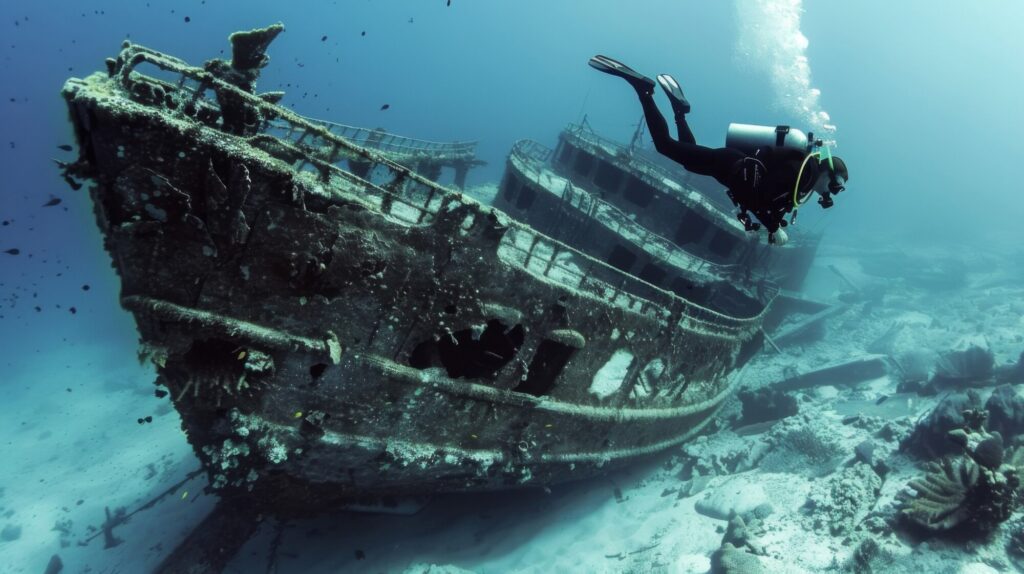The sinking of the Titanic on April 14, 1912, is one of the most infamous maritime disasters in history. While the official investigation concluded that the sinking was an accident, various conspiracy theories have emerged over the years. Here’s a balanced look at both perspectives:

Accident Theory :
The official investigation, led by the British Board of Trade, concluded that the Titanic sank due to a combination of factors:
1. Excessive speed:
The Titanic was traveling at a speed of around 22 knots (25 mph) in an area known to have icebergs.
2. Inadequate lookout:
The crew did not have access to binoculars, and the lookout team did not have sufficient training or experience.
3. Warnings ignored:
The Titanic received several iceberg warnings from other ships, but they were ignored or not taken seriously.
4. Design flaws:
The Titanic’s watertight compartments were not designed to handle the amount of water that poured in after the collision.
Conspiracy Theories :
Several conspiracy theories have been proposed over the years, including:
1. Morgan Robertson’s Novella:
Some point to a novella written by Morgan Robertson in 1898, which described a ship called the SS Titan that sank in the North Atlantic after striking an iceberg. While this is an interesting coincidence, it’s not conclusive evidence of a conspiracy.
2. J.P. Morgan and the Federal Reserve:
One theory suggests that J.P. Morgan, a wealthy banker, orchestrated the sinking of the Titanic to eliminate opposition to the creation of the Federal Reserve System. However, there is no credible evidence to support this claim.
3. Insurance Scam:
Another theory proposes that the Titanic’s owners, the White Star Line, intentionally sank the ship to collect insurance money. However, this theory has been largely debunked by experts and evidence.
4. Government or Military Involvement:
Some conspiracy theorists believe that the Titanic was sunk by a government or military entity, possibly as part of a larger plot or to cover up a secret mission. However, there is no credible evidence to support these claims.
5. The Titanic was switched with its sister ship:
One conspiracy theory suggests that the Titanic was switched with its sister ship, the Olympic, which had been damaged in a collision earlier in 1912.
Here are some more details about the Titanic’s sinking:
1. Departure from Southampton:
The Titanic departed from Southampton, England on April 10, 1912,bound for New York City.
2. Stopovers:
The ship made stopovers at Cherbourg, France and Queenstown, Ireland before heading west across the North Atlantic.
3. Passengers and crew:
The Titanic had over 2,200 passengers and crew members on board, including some of the wealthiest and most prominent people in the world.
The Iceberg Collision
1. Warning signs:
The Titanic received several iceberg warnings from other ships in the area, but they were ignored or not taken seriously.
2. Collision:
At around 11:40 PM on April 14, 1912, the Titanic struck an iceberg on its starboard (right) side.
3. Damage:
The collision caused significant damage to the Titanic’s hull, but it was not immediately apparent how severe the damage was.
The Sinking
1. Water pouring in:
As the Titanic began to take on water, it became clear that the damage was more extensive than initially thought.
2. Lifeboats:
The crew began to launch the lifeboats, but there were not enough to accommodate all passengers and crew.
3. Panic and chaos:
As the reality of the situation set in, panic and chaos broke out on board, with passengers and crew fighting for survival.
Aftermath
1. Rescue efforts:
The crew of the RMS Carpathia, which had received distress calls from the Titanic, arrived on the scene several hours after the sinking and rescued over 700 survivors.
2. Investigation:
An investigation into the sinking was launched, which concluded that a combination of human error, design flaws, and unfortunate circumstances had contributed to the disaster.
3. Changes to maritime safety:
The Titanic disaster led to significant changes to maritime safety regulations, including the implementation of a system for reporting icebergs and the use of wireless telegraphy for emergency communication.
Interesting Facts :
1. The Titanic was massive:
The Titanic was the largest ship in the world at the time, measuring over 882 feet (270 meters) long and 92 feet (28 meters) wide.
2. The Titanic was luxurious:
The Titanic was designed to be a luxury liner, with elaborate dining rooms, luxurious staterooms, and even a swimming pool and gym.
3. The Titanic had a dog kennel:
The Titanic had a dog kennel on board, where first-class passengers could house their pets during the voyage.
Conclusion :
While conspiracy theories surrounding the Titanic’s sinking can be intriguing, the overwhelming evidence supports the conclusion that the disaster was an accident caused by a combination of human error, design flaws, and unfortunate circumstances.
The Titanic’s sinking led to significant changes in maritime safety regulations, including the implementation of a system for reporting icebergs and the use of wireless telegraphy for emergency communication.
We’ve shared some lesser-known facts about the Titanic’s sinking. Hopefully, you find them interesting and informative!